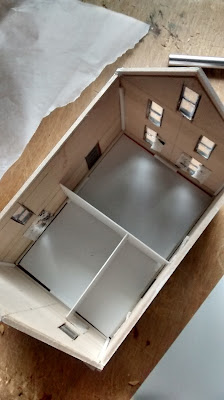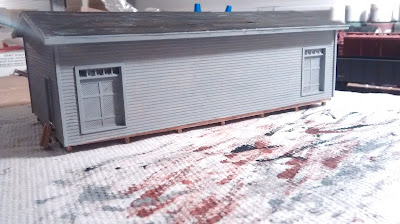This afternoon, I assembled Maine Central #3852, an accurail two bay hopper kit that I purchased at Mainline Hobby Supply in Blue Ridge Summit, Pennsylvannia. This is a very nice kit and built into a very nice car. It was a nice, quick, afternoon project after a long, slow, day at school. For the most part, I followed the instructions to the kit and did not make any modifications to the car. However, in the course of assembling the kit, I made several changes to the order in which I assembled the kit. I will note those modifications here, mostly for my own regrence if I ever build another model from this specific kit. First, when adding the coupler and coupler pockets to the car, add them before adding the air resevoir. It makes screwing the couplers into place much easier. Second, glue the support post to the main body before adding the end assemblies with the couplers and such. Finally, screw the screws for the trucks all the way down the holes in the bolsters before att...
















